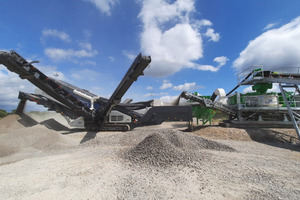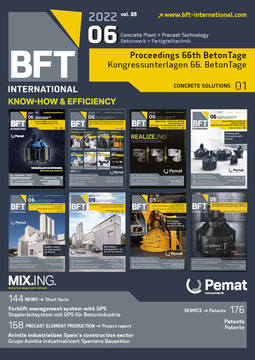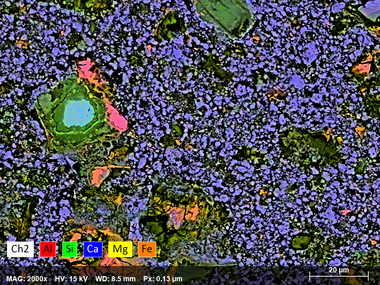CO2 sequestration in recycled concrete –
a cornerstone towards carbon neutrality
HeidelbergCement is committed to reaching carbon neutrality of its entire product portfolio on the concrete level by 2050. Heidelberg-Cement will work on all levels not only to minimize emissions, but also to capture and use or store the remaining carbon dioxide. One important cornerstone for achieving these targets is to implement a real circularity in concrete recycling, including carbonation of its components.
The hardened cement paste, or its hydrated clinker phases, are an important concrete constituent that opens up a huge potential for binding CO2 permanently. Concrete can bind 25 to 30 % of the raw material derived CO2 by natural carbonation already during its use and recycling phases. HeidelbergCement is conducting thorough research to exploit the remaining, unused carbonation potential of recycled demolition concrete with the aim of binding the CO2 emitted during the calcination step of the cement clinker production process back to thermodynamically stable limestone. A first important step in this direction is the development of advanced processing and comminution methods for recycled demolition concrete to separate the individual fractions, i.e. aggregates, sand and hardened cement paste, homogeneously and to a high quality standard. In September 2021, HeidelbergCement commissioned the first pilot plant of this type. During application trials, the aggregates and sands processed using this method exhibited a quality equivalent to natural raw materials. The separated cement paste is easy to carbonate by applying CO2, for example by directly using the CO2-containing exhaust gases from cement plant operations. Such recarbonated recycled cement paste, cRCP, exhibits pozzolanic reactivity in a cementitious environment and contributes to microstructure and strength development. This cRCP can thus be applied as a cementitious material replacing clinker in cement. The in-depth research conducted at HeidelbergCement and within the joint “C2inCO2” project funded by the Federal Ministry of Education and Research (BMBF) also investigates the processing and carbonation methods required for this purpose.







